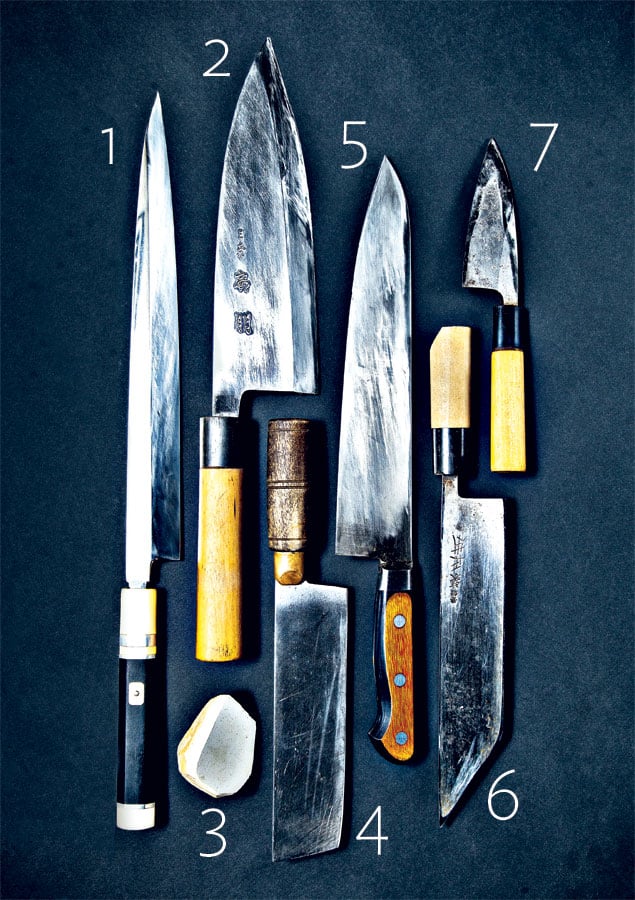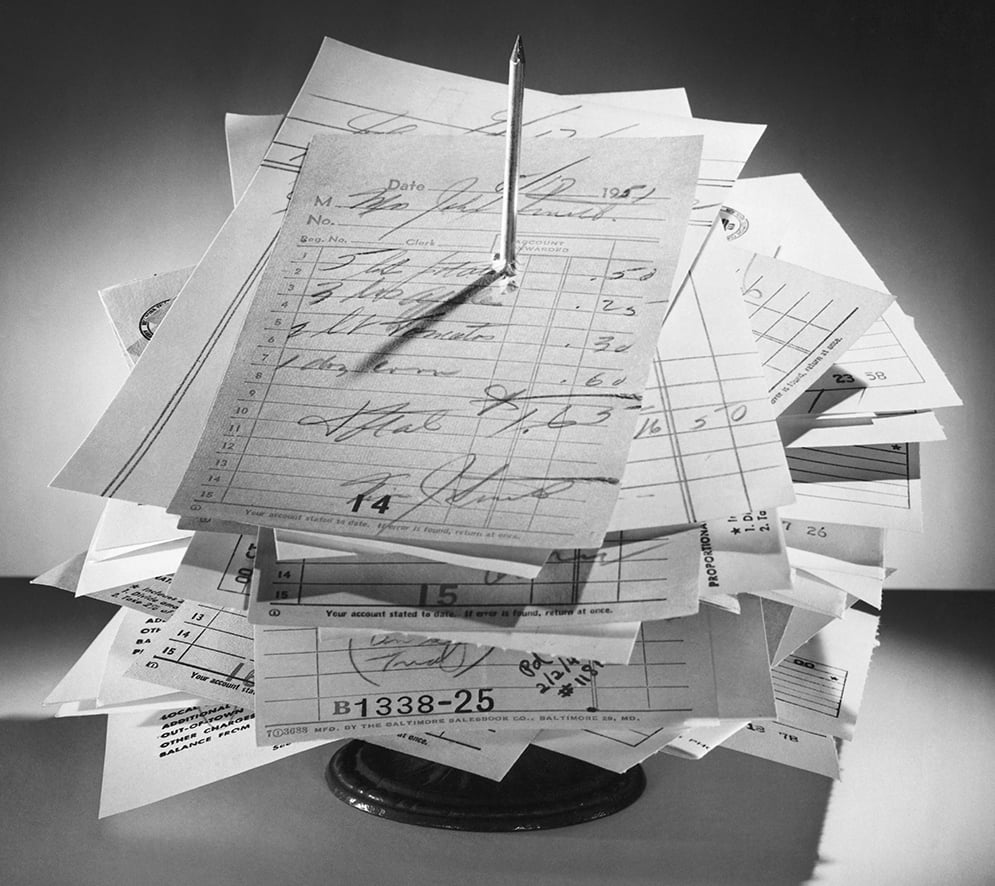Sushiko chef Koji Terano purchased his yanagi knife (1)—a
classic sushi and sashimi slicer—in Osaka. The long blade slices fish in a
single, clean stroke.
To slice large pieces of tuna, Sushi Taro chef/owner Nobu
Yamazaki uses a deba knife (2) that’s double the typical size—his father
gave it to him 30 years ago.
Sushiko’s Terano follows a traditional sharpening method, using
this small stone (3) to polish his larger knife stone. It smoothes out
irregularities and ensures a sharp blade.
The Source’s Scott Drewno swears by his expensive Misono
santoku knife but often reaches for this equally versatile Chinese-style
cleaver (4) when prepping vegetables and duck; it’s $25 at Best Supply
(413 Morse St., NE; 202-544-2525).
Kaz Sushi Bistro’s Kaz Okochi prefers a gyuto knife (5), which
he says is the most reached-for blade in Japan’s professional kitchens. He
uses it for everything from cutting meat and vegetables to slicing
sushi.
Yamazaki’s Tokyo-style eel knife (6) is designed specifically
for slicing eel through the back instead of the belly, a tradition born in
the samurai period to avoid references to human seppuku, or ritual
disembowelment.
When Makoto owner Yoshiaki Itoh retired last year, his son,
Gene Itoh, took over both the restaurant and his knives, many of them more
than 20 years old. This small deba (7), sharpened only on one side, is
best for cutting fish bones.
Want to buy a Japanese knife? You’ll find the best selection at Korin.com.




















